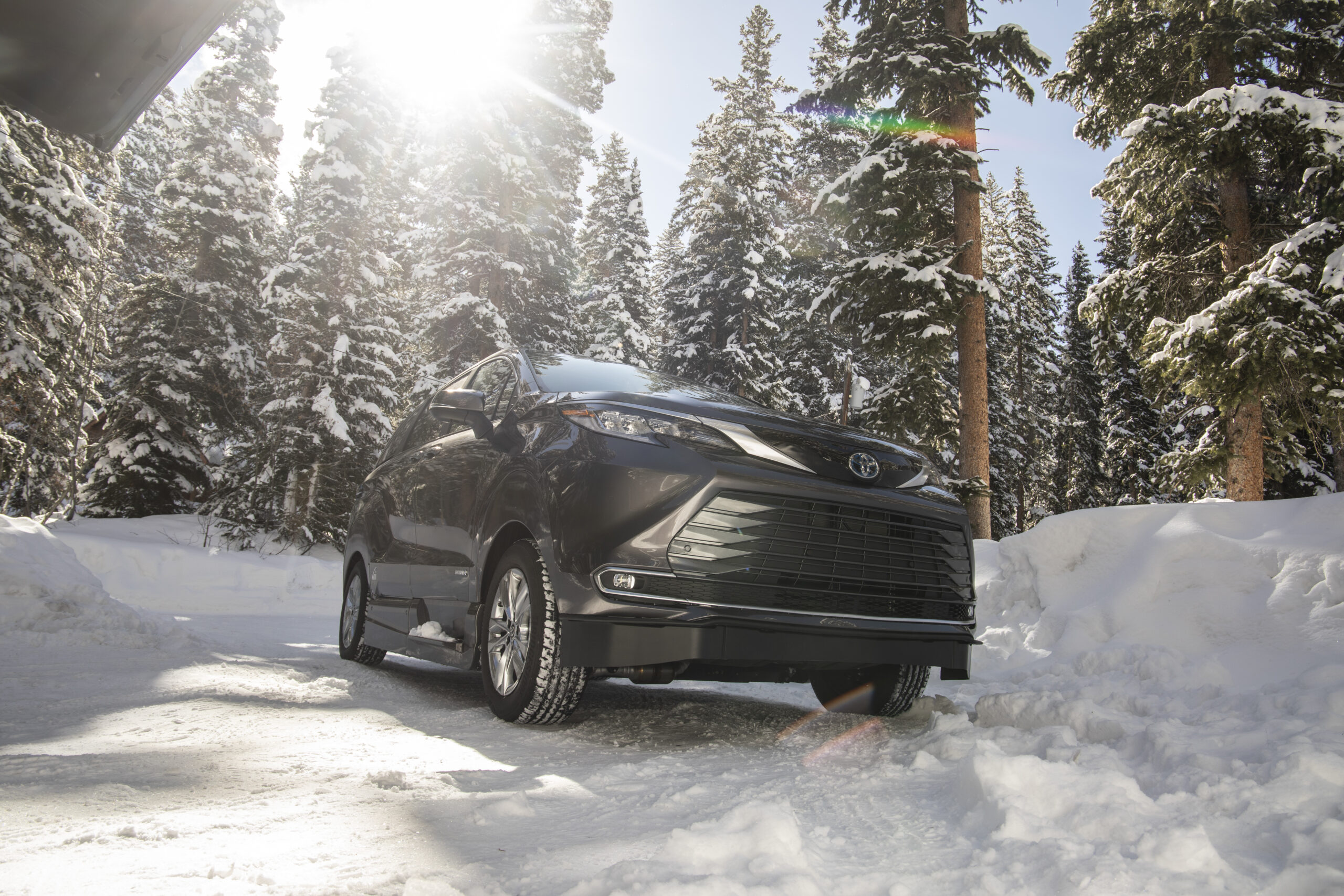
Winter, the most anticipated and dreaded season of the year, has finally arrived. In addition to the holiday festivities, winter also brings dangerous driving conditions. But with proper preparations, you can navigate the snowy roads safely and easily. Below are some things you should do to prepare for winter and winterize your wheelchair-accessible van.
Make Sure the Path to Your Van Is Clear
Driving in winter can be dangerous, but so can getting from your house to your car in the snow. Before you head out, make sure to clear snow and ice off your ramps, steps, and walkways. While shoveling is the traditional way to remove snow, throwing down a few handfuls of a snow/ice melt product can go a long way toward clearing your path.
Clean Snow and Ice Off Your Van
Not only is it dangerous to drive with several inches (or more) of snow on your roof, but it’s also illegal in many states. To avoid the risk of endangering yourself or someone else when the snow flies off your roof, it’s best to clear it off before you start driving. Most of the time, a few swipes of a broom will clear snow off your roof just fine. If your roof or windshield is icy, you may need to use an ice scraper or run your defroster for 5-10 minutes to get the ice to loosen up.
Winterize Your Wheelchair Van
The most important thing you can do to prepare yourself for safe winter travels is to winterize your van. Learning how to winterize your wheelchair van is as easy as performing some routine maintenance. Below are a few of the most crucial steps to take when winterizing your wheelchair van. If you need any assistance preparing your van for winter, the Clock Mobility Service Team is happy to help.
Buy Snow Tires
Snow tires are absolutely essential for anyone who owns a vehicle that will be used in winter weather. In contrast to all-season tires, snow tires often feature a deeper tread and are comprised of unique rubber compounds that remain malleable in cold weather, allowing them to grip cold surfaces better.
When shopping for snow tires, make sure the tires you choose have a symbol resembling a snowflake on a mountain on the tire’s sidewall. This image denotes that the tire complies with the snow traction standard set by the tire industry. These tires have substantially better traction in the snow than standard tires, resulting in less slippage and safer travel.
It’s also worth noting that you should buy an entire set of snow tires at once. Using two snow tires and two non-snow tires increases the chances of your vehicle slipping or sliding off the road in icy conditions. If purchasing an entire set of snow tires isn’t an option, it may be best to stick with all-season tires.
While you’re at it, you might also consider purchasing wheelchair tires that can handle snow. Deeper grooves on wheelchair snow tires make it easier for your wheelchair to move through the snow and reduce the chances of it sliding on black ice.
Like What you're reading? Subscribe to our Newsletter and get new updates directly to your inbox
Check Your Wiper Blades
Visibility is critical anytime you’re driving, but it’s even more important when you’re traveling on snow-covered roads. Since snow and rain can quickly accumulate on your windshield, you need to make sure your wipers are functioning correctly so they’ll thoroughly remove all moisture from your windshield and give you a clear view of the road ahead Additionally, replace your windshield wiper fluid with a brand that includes antifreeze to keep your windshield from glazing over.
Check Your Battery
Any vehicle’s battery can suffer in cold weather, but those in wheelchair-accessible vehicles may experience extra hardship. Aside from the functions a typical car battery has to power, the battery in your van also supplies additional power to electric lifts, ramps, and doors. With that in mind, make sure you check your battery to ensure it is in good enough condition to last the winter. If it’s not, it’s best to have it replaced to avoid the likelihood of you being stranded in cold weather with a dead battery.
Make an Emergency Kit
Regardless of the season, keeping an emergency kit in your vehicle is always a good idea. But if you really want to go the extra mile, you can make several emergency kits designed to suit your needs in different seasons throughout the year.
Your winter emergency kit should include a flashlight, hand warmers, coats, hats, flares, a shovel, blankets, non perishable snacks, water, and a charger for your phone. These items will help keep you going if you find yourself stranded and in need of help during a winter drive.
Inspect Your Wheelchair Ramp/Lift
Before it gets too cold, make sure you lubricate moving parts in your wheelchair van’s ramp mechanism to help them function better in colder temperatures. You should also ensure no salt, dirt, snow, or debris is trapped in any of your ramp mechanisms, as this can cause your ramp to malfunction or get stuck in one position.
Talk to Clock’s Service Team About Winterizing Your Vehicle
The best way to ensure your van is ready for winter is by scheduling regular maintenance appointments. If you’re unsure whether your wheelchair-accessible van is fully prepared for the winter months, bring it to the team at Clock Mobility. Schedule an appointment with our service professionals and let us check your vehicle, offer recommendations, and assist you with the winterizing preparations that will keep you and your passengers safe all winter long.
